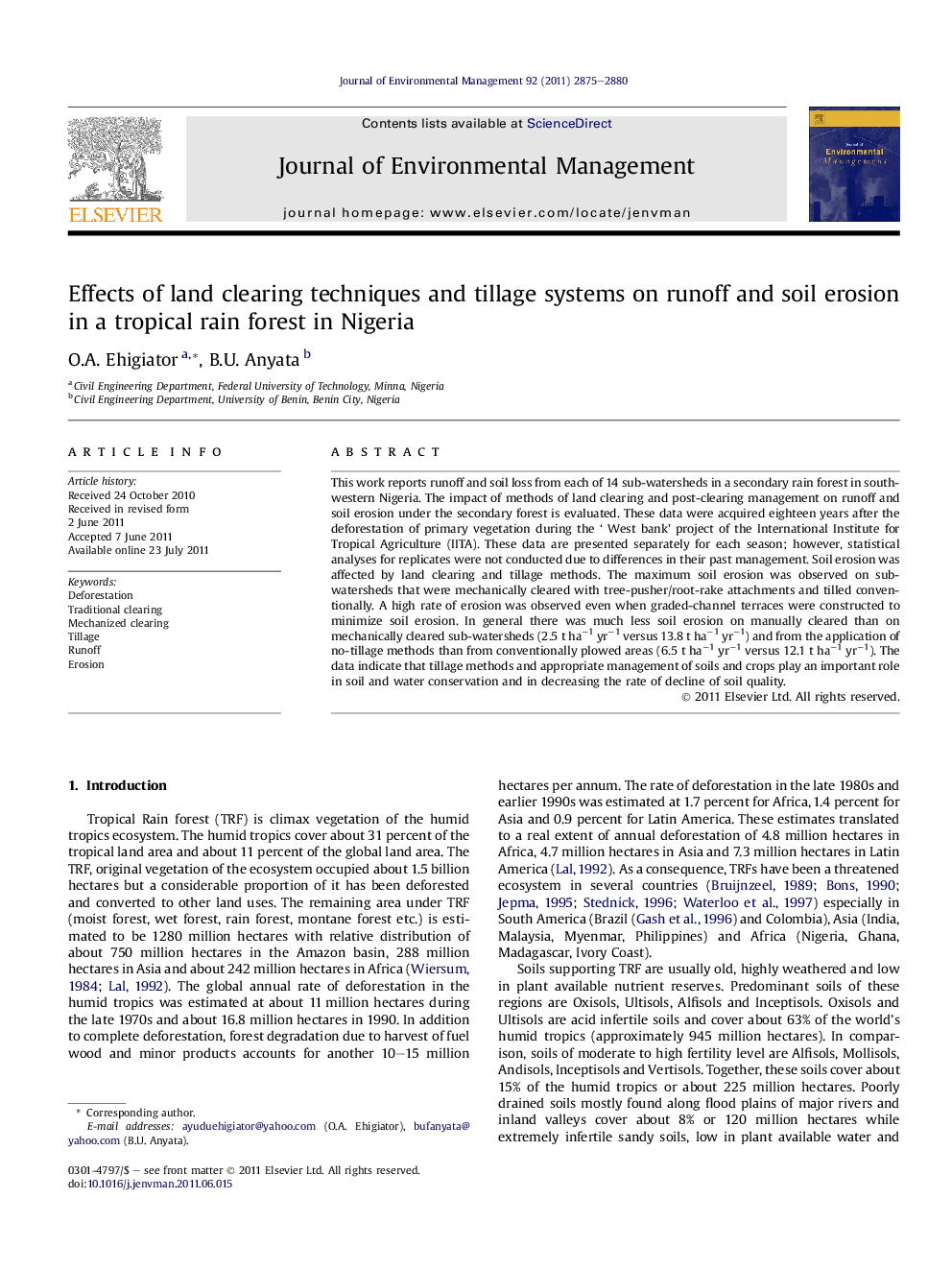| Article ID | Journal | Published Year | Pages | File Type |
|---|---|---|---|---|
| 1057218 | Journal of Environmental Management | 2011 | 6 Pages |
This work reports runoff and soil loss from each of 14 sub-watersheds in a secondary rain forest in south-western Nigeria. The impact of methods of land clearing and post-clearing management on runoff and soil erosion under the secondary forest is evaluated. These data were acquired eighteen years after the deforestation of primary vegetation during the ‘ West bank’ project of the International Institute for Tropical Agriculture (IITA). These data are presented separately for each season; however, statistical analyses for replicates were not conducted due to differences in their past management. Soil erosion was affected by land clearing and tillage methods. The maximum soil erosion was observed on sub-watersheds that were mechanically cleared with tree-pusher/root-rake attachments and tilled conventionally. A high rate of erosion was observed even when graded-channel terraces were constructed to minimize soil erosion. In general there was much less soil erosion on manually cleared than on mechanically cleared sub-watersheds (2.5 t ha−1 yr−1 versus 13.8 t ha−1 yr−1) and from the application of no-tillage methods than from conventionally plowed areas (6.5 t ha−1 yr−1 versus 12.1 t ha−1 yr−1). The data indicate that tillage methods and appropriate management of soils and crops play an important role in soil and water conservation and in decreasing the rate of decline of soil quality.
► The impact of land clearing methods and tillage systems on runoff and soil erosion is evaluated. ► Runoff was less from manually than from mechanically cleared treatments and from untilled than plowed sub-watersheds. ► Maximum soil erosion occurs on sub-watersheds cleared with tree-pushers/root-rake attachments and tilled conventionally. ► The study provides important guidelines for agricultural land development on Vertisols under secondary vegetation.
